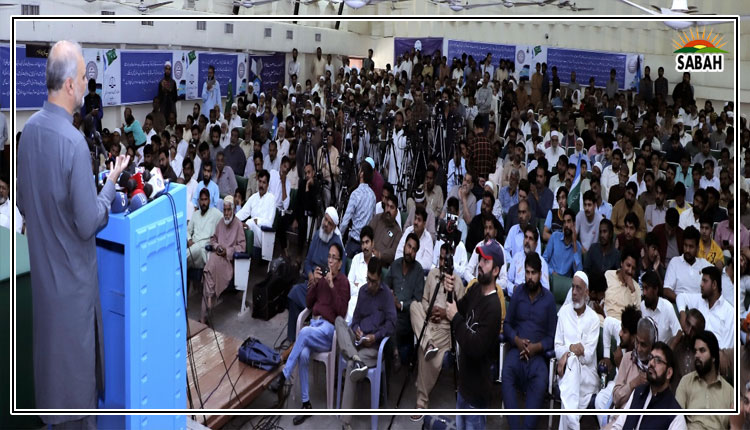Rethinking renewables…Asha Amirali
WHY is renewable energy in the doldrums in Pakistan despite annual oil import bills of $27 billion? There are many explanations, but most common is the lack of finance. No one wants to invest.
Consider the case of Pakistans flagship 600MW Muzaffargarh solar power plant. In 2022 the government acquired over 2,500 acres of land, set a tariff, and invited international investors to bid on a capital-friendly Build, Own, Operate and Transfer basis. Not a single bid was received despite multiple rounds, contractual sweeteners, and an international roadshow to court investors. Recently, Shehbaz Sharif directed that the project be put up for auction yet again, and it remains to be seen if anyone bites this time round.
Why has no one wanted to put their money in this project? Analysts cite reasons ranging from the tariff being set too low (which it was) to policy and political instability and the ballooning circular debt. If even China cant get paid on time despite sovereign guarantees, why would others feel secure?
These explanations make sense, but they do not go nearly far enough. The problem is much deeper than tariffs and Pakistans specific economic woes. A recent book (The Price is Wrong: Why Capitalism Wont Save the Planet) by Brett Christophers offers some perspective on why wind and solar are unlikely to replace fossil fuels anytime soon unless radical changes are made.
The argument is simple: while the cost of renewable power is now lower than that of fossil fuels, renewables are not a profitable business. The particularities of the technology and consequent market structure are the causal factors here. Barriers to entry in solar and wind are significantly lower than oil and gas because of the decentralised and variable scales at which these technologies can be deployed. Renewables, therefore, do not lend themselves to monopoly power and protected high profits like oil and gas do. Also, capital investments for renewables are heavy upfront, with investors having to wait years even decades to turn a profit. The private sector is, therefore, unlikely to avert planetary crises unless incentive structures are transformed through extensive regulation or companies are ordered to serve national objectives like during periods of war.
What is needed is massive public-sector overhaul with a grassroots political movement shaping the goals of public administration.
This should be a wake-up call for those who are expecting private finance to play a major role in managing and mitigating climate change. So far Western governments have been wooing private finance with subsidies and various treats on the understanding that once at scale, costs will come down, subsidies will be phased out and private companies will then get on with it. Christophers shows, however, that this is definitively not happening. Where subsidies have been wound down, capital has either stopped taking an interest or exited. Additionally, while the rate of renewable installation is at an all-time high, it is nowhere near what it needs to be to meet even the two-degree warming limit issued by the Intergovernmental Panel on Climate Change. It is also highly geographically uneven. Sixty-four per cent of renewable capacity installed last year was in China. The G7 countries only accounted for 7.6pc between them. Interestingly, China also happens to be the only country in the world where private capital is not in charge of energy infrastructure. Is that a coincidence?
Not quite. The profit motive is important for the state-owned companies and state-owned banks running the Chinese power sector, but it is not dominant. The order of magnitude shift that we see in Chinas renewable capacity is the direct result of a radically different mode of organisation, one in which the state directs production and the private sector and profits do not play the major role.
Despite our brotherly relationship with China though, we in Pakistan remain in thrall to the idea of private sector-led development. International development star Stefan Dercons recent article in these pages repeated the same tired advice that we have been hearing for 40 years. But no matter how rotten the public sector is today, the task has to be to make it better. This is not because public sector ownership guarantees better social outcomes, but because it at least allows for the possibility of socially responsive and socially determined development.
Look at the power sector. Electricity demand dropped nearly 10pc last year. Prices are such that people cannot afford to electrify their homes and run their fans and fridges. In part this is because of high fuel prices, currency devaluation, and deteriorating plant efficiencies. These factors are obviously challenging but do not have to be crisis-inducing. It is the bait to lure private investment such as 30-year power purchase agreements, sovereign guarantees, capacity charges, and dollar indexation that turn it into a crisis. Making sure that capital gets its pound of flesh has crippled the country.
What is needed is massive public-sector overhaul with a grassroots political movement shaping the goals of public administration. And perhaps as globalisation falters and states engage more selectively with markets and each other, state-led development could become more viable. Cleaning up the mess in the power sector will create winners and losers, just as the operation of the mess itself does in no uncertain terms.
In the clean-up though, people and the environment need to be on the winning side. This is not wishful thinking; it is setting priorities. And renewables, despite their many problems, have a role to play on the winning side for economic, political, and environmental reasons.
The history of power sector reform in the country tells us, however, that private companies will not cough up money for renewable infrastructure unless the basic well-being of the population is mortgaged in return. To expect otherwise is foolish.
Courtesy Dawn












